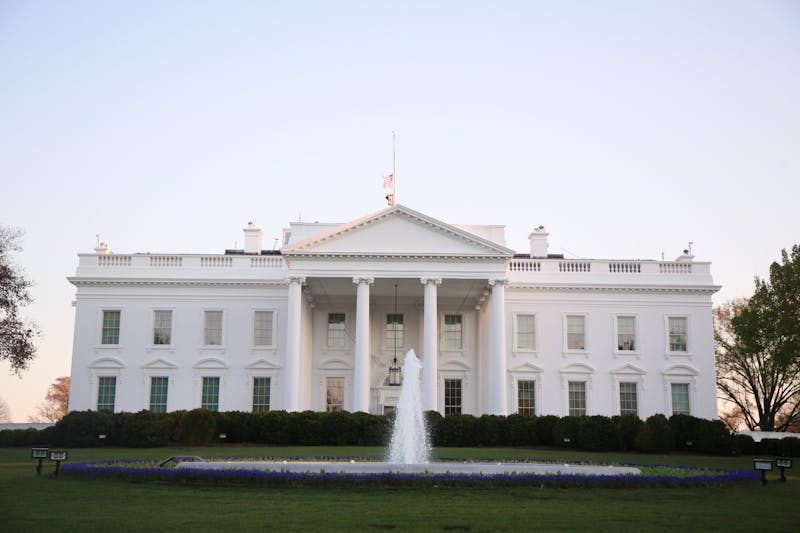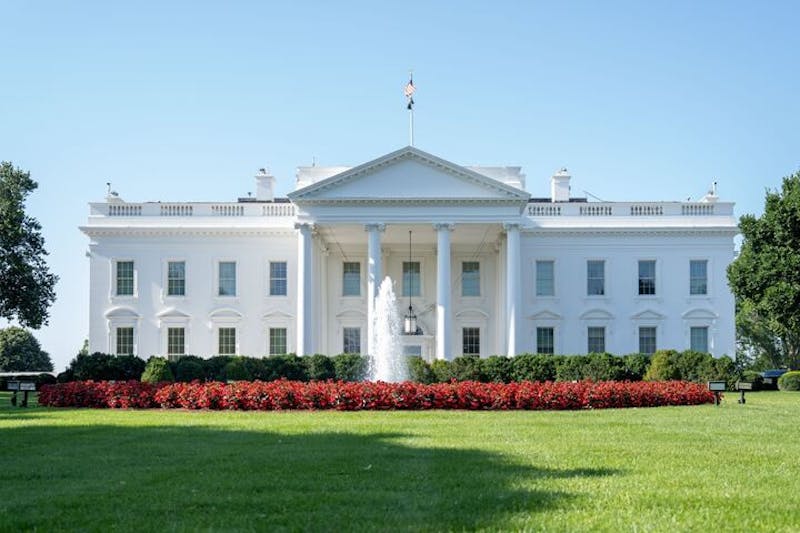
Wherever Jacques-Jean Tiziou goes, he is loaded and ready to shoot -- armed with at least one camera. Whether he is at a party, a concert, a wedding or just sitting in a coffee shop, he is constantly capturing the images around him. "I don't go out looking for things to shoot," Tiziou admits. "They just jump out at me all the damn time." And Mongolia proved no exception. With little knowledge of the country, this past summer Tiziou embarked on a trip not in search of a specific image that could only be found in Mongolia, but rather, just as an opportunity to see the world and do what he loves most -- take photos. "I don't want to put myself into a niche," Tiziou says. "I look at the whole world and want to photograph it. I want to shoot everything." Tiziou's trip to Mongolia is currently on display for all of Penn to enjoy, with the Fox Gallery exhibiting his photographs from now through Feb. 21. Tiziou, who graduated from the College last year with a bachelor of arts in fine arts, was in contact with Legal Studies Professor Philip Nichols, who had been living and teaching in Mongolia for the past year. And so with someone to visit, funding from Penn and a graduation present from his parents in the form of a round-trip plane ticket, Tiziou left to spend the month of June in Mongolia. He spent two weeks in the capital, Ulan Bataar, and two weeks exploring the Mongolian countryside. Along the way, Tiziou took roughly 10,000 photos. "I used to spend more on film than I did on food," he says with a laugh. Now he uses a digital camera, which reduces cost and developing time. His photographs from his trip include pictures of the dry and barren Gobi desert, packs of wild horses in full gallop, natives in their homes as well as green forests and flowing rivers. He describes the landscape as "the most diverse I've ever seen" and his photos capture this natural variety. His pictures also take viewers down the roads that he traveled as he drove with a guide through valleys and deserts on two-lane "highways" and dirt paths. They then leave the backroads, bringing the viewer into the capital and presenting modern buildings and an urban landscape. But in exploring the desert, Tiziou needed more than a guide. With no signs to direct them, he recalled that they would stop for directions at the native villages they passed along the way. Here, Tiziou discovered that although a large portion of the population lead a traditional nomadic lifestyle and live in small, felt, collapsible tents known as gers, signs of modern technology and Western influences still were evident. "In the middle of an empty valley, there would be a ger with solar panels or wind generators and a satellite dish," Tiziou recounts. "They get CNN." Tiziou describes the homes that he stopped at along his travels as "Mongolian diners." "For $1, people would make you a huge meal," he says. But once again, Tiziou wasn't content to simply enjoy the meal --he also photographed these individuals as they cooked. He shot their children, their homes and the animals that milled around outside. He paused to photograph dead horses lying in the desert, a common sight for the Mongolians. And he also snapped shots of construction workers, male and female, performing roadwork. Along with the invaluable images that Tiziou's trip to Mongolia provided him, it also supplied him with what he describes as "my most priceless and most embarrassing moment." Although another American tourist had warned him of the dangers of walking through the streets looking through a lens rather than watching his footing, Tiziou was forced to learn the hard way. While walking back to the capital after spending time in the suburbs, he couldn't help but stop and take pictures of the "beautiful views of the city." "I took a couple of steps forward and fell into a manhole," Tiziou recalls, smiling and shaking his head. Unlike some of the manholes -- which are often left uncovered in Mongolia -- that are 12 feet deep, Tiziou stumbled down only one foot. However, the misstep was enough to leave a scrape on his leg and break his $1,600 lens. Still, Tiziou admits that after the fall, he couldn't stop laughing. "Up ahead, I saw a young Mongolian girl who was probably saying 'Look at the stupid American tourist.'" Harder than even traipsing through Mongolia, Tiziou says that combing through his thousands of photographs and narrowing them down to the 58 that are exhibited was a very difficult task. Although his work is available for purchase, Tiziou admits, "I'm not looking to sell fine prints as a source of income. If people pay me, I would rather they pay me to go out and shoot." Tiziou now works as a teaching assistant for two introductory photo classes and one Web design class at Penn. He also teaches Photo I at Moravian College in Bethlehem, Pa. What time he has left, he devotes to freelance photography work. Tiziou hopes to maintain this balance between teaching and photography and is considering getting a master's degree in fine arts. But a love of photography is nothing new for Tiziou. Though he traced his passion for photography back to high school when he first began taking photos, it may extend even further, at least if the old adage holds true -- a picture tells a thousand words -- and a baby picture that Tiziou viewed recently showed him sitting in his highchair chewing on a box of Kodak Triax 400 film. At Penn, Tiziou was a photo editor of The Daily Pennsylvanian. Since then, it seems that the camera has never left his side. "What I like about photography is the people that I meet along the way and all the experiences that I have that really make it interesting," Tiziou says. Mongolia was one such experience, but Tiziou still has many shots left to take.
The Daily Pennsylvanian is an independent, student-run newspaper. Please consider making a donation to support the coverage that shapes the University. Your generosity ensures a future of strong journalism at Penn.
DonatePlease note All comments are eligible for publication in The Daily Pennsylvanian.







